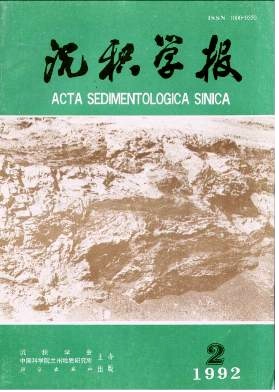Sedimental Characteristics of Ancient Desert in Bohai Sea
- Received Date: 1990-07-27
- Publish Date: 1992-06-10
Abstract: During the last glacial stage, the sea level of the world fell down generally with a mean range of about 130 m in East Asia. The continental shelves of Bohai Sea, Yellow Sea and most of East Chian Sea were exposed and turned into land. The influence of southeastern monsoon downhilled, the cold high pressure from Siberia which controlling Asia became stronger and stronger and the area influenced by it was far larger than the present one. When the continental glaciations of mid-high latitude in Europe and America were developed in a large scale, desert and prairie landscapes appeared at the same latitude in Asia because of less precipitation. Bohai Sea was an inland basin located in the centre of Asia during the glacial time and lay about several hundreds of kilometers away from the sea. Because the hills of Liaodong Peninsula, Miao Islands and Shandong Peninsula which are located to the southeast of Bohai Sea resisted the southeastern wind in summer, there was little rainfall there. Under the northwestern blowing it appeared that the topography was reformed and the material was differentiated. Thus, the abundant loose sediments distributed on the sea floor of Bohai Sea supplied enough material for the development of desert. The sandy sediments in Bohai Basin were accumulated to form sand dunes and further to developed into deserts locally. And the silty and clayey materials were blown down to the slope of hills or in the valley located to the southeast of the basin and formed loess there. The 14C dating of the calcareous dolls in the loess suggested that the loess was formed during 12000-25000 B.P. which was the flourish time of the Warm glacial. The dunes consists dominantly of well sorted and rounded medium-fine sand, which is coarse in the northwest and fine in the southeast. At present, the dunes in the central Bohai Sea are covered by the Holocene sediment. The underlying dune sediments have clearly foreset laminae with a high declimation. The dune sediments located in the east and the west of the Bohai Sea are still exposed on the seafloor, and the shape of the dunes was destroyed by the reworking of tidal current and wave. Up to now, about a quarter of Bogai Sea is covered by relict sandy sediments. The lithologic character of the sediments and the subbottom profiler records suggest that the ancient desert mainly distributed in the central Bohai Sea and Liaodong Bay, with relatively less developed in Bohai Bay, and no ancient desert had been formed in Laizhou Bay at the last glaciation.
| Citation: | Liu Zhenxia, Xia Dongxing. Sedimental Characteristics of Ancient Desert in Bohai Sea[J]. Acta Sedimentologica Sinica, 1992, 10(2): 94-99. |






 DownLoad:
DownLoad: